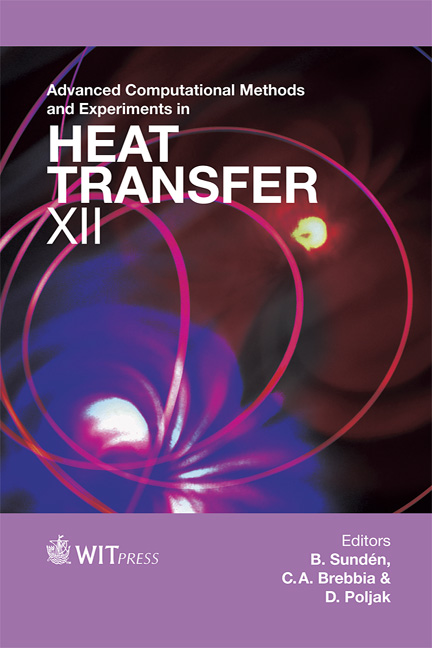An Experimental Study Of A Film Coolingwith Swirling Flow On The Endwall Of Ahigh Loaded 1st Nozzle
Price
Free (open access)
Transaction
Volume
75
Pages
12
Page Range
85 - 96
Published
2012
Size
2,109 kb
Paper DOI
10.2495/HT120081
Copyright
WIT Press
Author(s)
K. Takeishi, Y. Oda & S. Kondo
Abstract
This paper describes an experimental study on film cooling effectiveness of circular and fan-shaped film cooling holes with a swirling film coolant injected through the endwall of a high-loaded 1st nozzle. The experiments have been conducted by using a two dimensional vane cascade, designed based on the firststage vane of E3 (Energy Efficient Engine) engine studied by a NASA project. The film cooling effectiveness on the endwall of the enlarged 1st nozzle of E3 turbine was measured by using pressure sensitive paint (PSP) techniques. It appeared from the experimental results that the film cooling effectiveness of a circular hole was improved by increasing the angle of two impingement jets inside the cavity, which is used both to cool internal wall and to produce a swirling motion of film coolant. On the other hand, it was found that there exists an optimal jet angle between to 15 degrees in the case of a fan shaped film cooling hole. Thus the new film cooling method with swirling cooling air has been demonstrated to maintain its high film cooling effectiveness even under such a complicated flow field. Keywords: gas turbine, heat transfer, film cooling, swirling flow, PSP. 1 Introduction Gas turbines are used for aircraft propulsion and land-based power generation. Developments of turbine cooling technology play a critical role in increasing the thermal efficiency and power output of advanced gas turbines. Gas turbine’s vanes and blades are cooled externally by film cooling. It is achieved by injecting relatively cooler air (film coolant) from the internal coolant passages out of the vane surface in order to form a protective layer between the blade
Keywords
gas turbine, heat transfer, film cooling, swirling flow, PSP.





